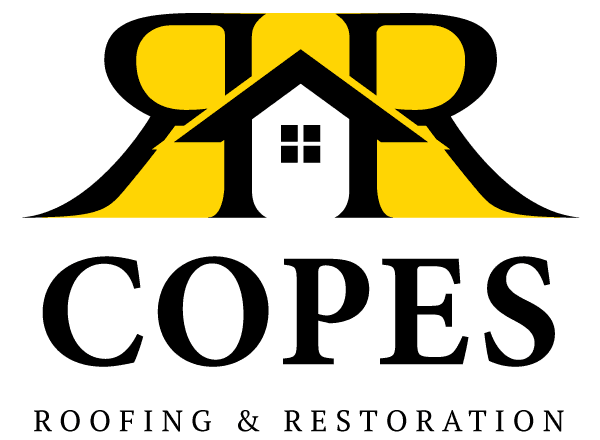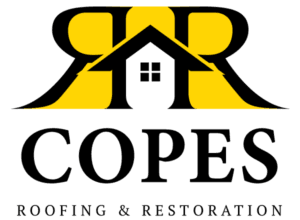Ready to transform your home with a durable steel roof? You’re about to discover the complete process that can protect your property for decades to come.
Whether you’re a hands-on homeowner or simply want to understand what quality installation looks like, this guide breaks down everything you need to know. Before diving into your project, consider scheduling a consultation with Copes R&R Construction to explore how professional installation can save you time and ensure flawless results
Understanding Steel Roofs
A steel roof consists of metal panels or shingles made from steel alloys that protect your home from the elements. These metal roofing systems use galvanized or galvalume-coated steel to prevent rust and corrosion, ensuring decades of reliable performance. Unlike traditional asphalt shingles that deteriorate over time, metal roofing maintains its structural integrity through extreme weather conditions. The material’s strength-to-weight ratio makes it an ideal choice for both new construction and replacement projects.
6 Types of Steel Roofing Systems
- Standing Seam Panels – These feature raised seams that interlock to create a watertight seal without exposed fasteners. The clean, modern appearance makes them popular for contemporary homes and commercial buildings.
- Corrugated Steel Panels – Classic wavy or ribbed panels that have been used for over a century on barns and industrial buildings. Today’s versions offer improved coatings and colors that make them suitable for residential applications.
- Steel Shingles – Designed to mimic traditional materials like slate, wood, or asphalt while providing superior durability. These individual pieces install similarly to regular shingles but last 2-3 times longer.
- Steel Tiles – Pressed steel formed to replicate clay or concrete tiles without the excessive weight. They’re perfect for homes with Mediterranean or Spanish architectural styles that can’t support heavy traditional tiles.
- Ribbed Metal Panels – Feature pronounced ribs running vertically that add strength and direct water flow. These panels work well on low-slope roofs where water drainage is critical.
- Stone-Coated Steel – Combines the strength of steel with an acrylic base coat and stone chip finish. This system offers the aesthetic appeal of traditional systems with the longevity of metal.
5 Benefits of a Steel Roof
Enhanced Durability and Longevity
Metal roofing stands as one of the most durable options available today. Unlike traditional asphalt shingles that need replacement every 15-20 years, a properly installed steel roof can last 40-70 years with minimal maintenance. This exceptional lifespan means you’ll likely never need to replace your roof again. The material resists cracking, shrinking, and erosion even in harsh weather conditions.
Superior Weather Protection
Your new metal roof acts like armor against Mother Nature’s worst tantrums. The interlocking panels create a nearly impenetrable barrier against rain, snow, and wind. Steel roofing can withstand winds up to 140 mph, making it ideal for areas prone to severe storms. Plus, the smooth surface allows snow and ice to slide off easily, preventing dangerous buildup.
Energy Efficiency That Saves Money
The reflective surface of steel bounces solar radiation away from your home, keeping interior temperatures cooler in summer. Many systems include special coatings that enhance this effect. You could see energy savings of 10-25% compared to traditional roofing materials.
Fire Resistance for Peace of Mind
When it comes to protecting your family, steel offers Class A fire resistance. The material won’t ignite from sparks or embers, providing crucial protection in wildfire-prone areas. This non-combustible nature also means better insurance rates in many cases. Your metal roof becomes a shield rather than a vulnerability.
Eco-Friendly and Sustainable Choice
Steel materials contain 25-95% recycled content and are 100% recyclable at the end of their life. Unlike asphalt shingles that end up in landfills, your old steel roof can become new products. The long lifespan also means fewer resources used over time. Additionally, you can install solar panels directly on steel without compromising its integrity.
Your DIY Guide to Installing a Steel Roof
9 Essential Tools and Metal Roofing Materials Needed
- Cordless drill with metal bits – You’ll need this for driving roofing nails and creating pilot holes in tough spots
- Tin snips or electric metal shears – Essential for cutting metal roofing materials to fit around vents and edges
- Chalk line and measuring tape – Accurate measurements prevent costly mistakes and ensure straight panel alignment
- Safety equipment – Non-negotiable items include work gloves, safety glasses, and non-slip boots
- Roofing nails (1.5-2 inches) – Choose galvanized or stainless steel fasteners to prevent rust streaks
- Metal panels and trim pieces – Order 10% extra to account for waste and mistakes
- Synthetic underlayment – Provides an extra moisture barrier beneath your steel panels
- Ridge caps and flashing – These finishing pieces seal vulnerable areas against water intrusion
- Sealant tape and closure strips – Creates weathertight seals at panel overlaps and edges
A Step by Step DIY Installation Process
- Prepare your roof deck by removing old shingles if necessary and checking for damaged decking that needs replacement. Any soft spots or rot must be fixed before proceeding.
- Install synthetic underlayment starting at the bottom edge, working your way up with 6-inch overlaps. This creates your secondary water barrier.
- Snap chalk lines to ensure your first panel goes on perfectly straight. This initial alignment affects every subsequent panel.
- Install eave flashing along the bottom edge of your system, securing it with roofing nails every 12-16 inches.
- Position your first steel panel at the bottom corner, ensuring proper overhang at the eave (typically 1-2 inches).
- Secure the panel using appropriate roofing nails through the flat portion next to the ribs, not through the raised sections.
- Continue installing panels from bottom to top, overlapping each panel according to manufacturer specifications (usually one rib).
- Cut panels as needed around vents, chimneys, and other penetrations using your tin snips or metal shears.
- Install valley flashing before placing panels in these areas, ensuring water flows properly off your system.
- Add ridge caps as your final step, overlapping each piece to create a watertight seal at the peak.
How long does it take?
The timeline for DIY installation varies significantly based on your experience and complexity. A simple gable roof on a single-story home might take a skilled DIY enthusiast 3-5 days to complete. However, most first-time installers should plan for 7-10 days of work. Complex systems with multiple valleys, dormers, or steep pitches can easily stretch the project to two weeks or more.
4 Challenges of Installing a Roof By Yourself
Physical Demands and Safety Considerations
Installing metal roofing demands significant physical stamina and agility. You’ll spend hours on a sloped surface, constantly bending, lifting, and maneuvering large metal panels. The risk of falls increases dramatically when you’re fatigued or working in less-than-ideal weather. Even experienced DIY enthusiasts find themselves exhausted after just a few hours of work.
Weather-Related Complications
Mother Nature doesn’t always cooperate with your installation schedule. Wind can turn metal panels into dangerous sails, while rain creates slippery conditions that make work impossible. You need several consecutive days of good weather to complete the job properly. Any delays mean leaving your home partially exposed to the elements, potentially causing water damage.
Technical Precision Requirements
Metal roofing installation requires exact measurements and precise cuts around every obstacle. A small error in your initial panel placement compounds with each subsequent panel, potentially requiring complete reinstallation. Improperly sealed penetrations or incorrectly overlapped panels create leak points that won’t show up until the next heavy rain. These mistakes often cost more to fix than hiring professionals initially.
Tool and Equipment Investment
The specialized tools needed for metal roofing installation represent a significant upfront cost. Quality tin snips, safety equipment, and proper fasteners can easily total $500-800 for a one-time project. You’ll also need scaffolding or jacks for safe access, adding rental costs. Many DIY enthusiasts discover mid-project that they need additional tools, causing frustrating delays.
When You Should Consider Hiring a Professional Contractor
- Your roof has a pitch steeper than 6/12, making DIY work extremely dangerous
- Multiple valleys, dormers, or complex architectural features complicate the installation
- You discover extensive deck damage requiring structural repairs
- Local building codes require licensed contractor installation for permits
- You lack confidence working at heights or handling large metal panels
- The project timeline conflicts with approaching severe weather
- Your insurance company offers better coverage for professional installation
- Previous DIY projects have resulted in callbacks or repairs
- You value warranty protection that covers both materials and labor
- Physical limitations make extended ladder work unsafe or impossible
Ready to upgrade your home with a steel roof?
The journey to a beautiful, long-lasting steel roof doesn’t have to be overwhelming. While DIY installation is possible, the expertise of seasoned professionals ensures your investment performs flawlessly for decades.
Transform your home’s protection and curb appeal by scheduling a consultation with Copes R&R Construction today. Visit our Facebook page to see stunning transformations and discover why Greenwood homeowners trust us with their most important investment.


